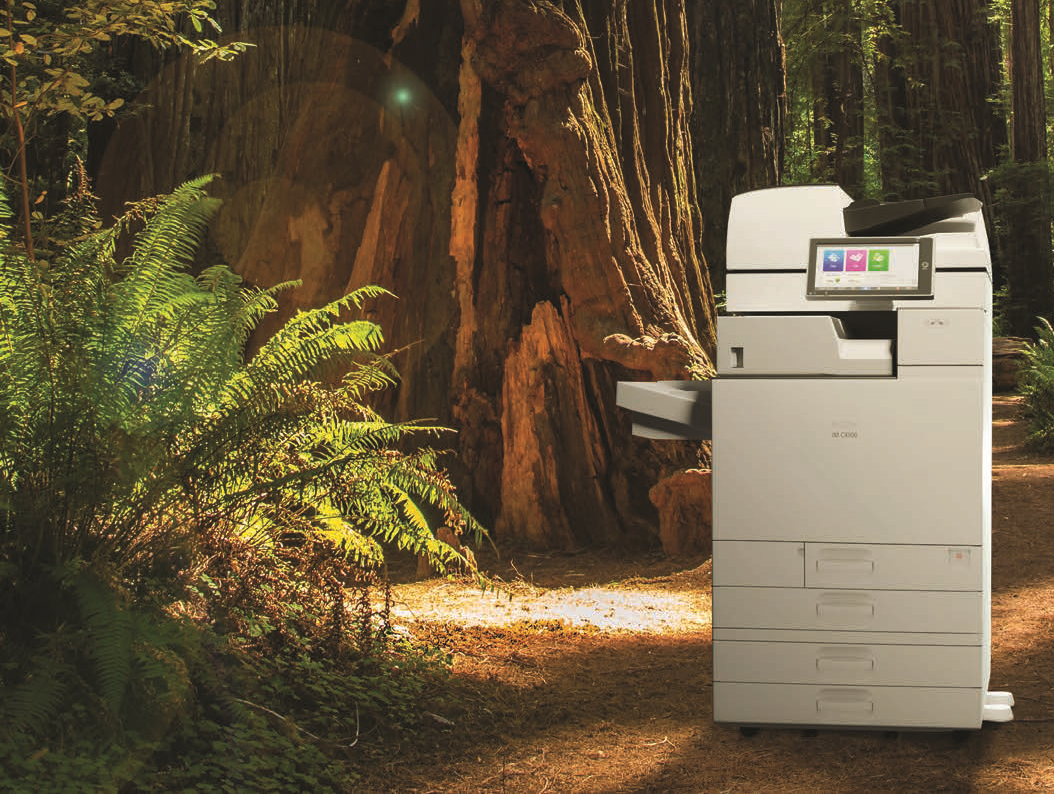
With the growing awareness of climate change, businesses are recognising the need to be environmentally friendly. Credentials and standards such as ISO14001 can really help strengthen your brand and improve your credibility in the eyes of your customers. However, office printing is convenient. It’s a great, no-excuses way to ensure that everyone in a meeting has the information they need in front of them when it’s needed. It’s a vital sales tool. And it still has a role to play in quality control and analysis too. So, with the ongoing need to print, is it really feasible for businesses to become carbon neutral?
The good news is, there are lots of things that your business can do to improve its sustainability without giving up entirely on the benefits that paper and printed materials can bring. By taking steps to make your printing practices as eco-friendly as possible, your office printing doesn’t have to be toxic to the environment.
Paper is still a pleaser
It’s recyclable, sustainable, and biodegradable. However, there’s no denying that paper used in office printing does have an impact on the environment. By being responsible with the paper you use – opting for double-sided printing where possible, purchasing recycled paper, and recycling your own paper to keep it out of landfill once you’ve finished with it, you can substantially reduce the impact that your paper use has on the natural world.
Paper is reusable up to seven times, which makes it a comparatively sustainable resource.
Energy efficiency for your bottom line
Printing uses a lot of electricity and, not only is this harmful to the environment because of the use of fossil fuels and the by-products of energy production, but it’s also extremely costly to businesses. In April 2022, Ofgem raised the price cap on household energy bills by 54%, but businesses do not have this kind of price cap. Between January 2021 and January 2022, energy prices rose by 250% in line with wholesale gas prices.
However, office printers are now able to make use of renewable energy sources, reducing their carbon footprint. They also often come with smart features and functionalities that reduce the amount of energy used. Some also enable you to monitor your energy usage too, allowing businesses to use their printing equipment in the most energy-efficient way possible, making it more cost-effective and more sustainable.
Water waste – a thing of the past?
Less relevant in office printing, but for organisations where printing is actually their product or service, water waste is an issue. However these days, water-monitoring capabilities and devices enable more efficient use of water than was possible in previous times. For added environmental awareness bonus points, it’s now possible to recycle waste water, using grey water to flush toilets, or elsewhere in your organisation.
Reduce your landfill contribution
All manufacturing processes produce waste of some sort but there are now many ways to reduce the waste generated by office printing and the industry behind it. These days, toner cartridges, plastics and pallets, ink tins, aluminium or paper plates are all recyclable, reducing the amount of waste overall that ends up in landfill.
Office printing processes
It isn’t just the materials used in the printing processes that have become more environmentally conscious. The pre-press has been revolutionised by new technology that has greatly reduced the environmental impact of printing.
The advancement of computer to plate (CTP technology) doesn’t require chemicals or film and is more energy efficient. Choosing to soft proof your content (proofreading on-screen) can also reduce the energy you use – and the waste, logistics and energy requirements needed.
The ink industry has changed too. Litho ink tends to use recyclable and renewable resources such as vegetable oil, starch, and soy, which are even effective for fluorescent and metallic ink. However, digital inks, whilst not oil-based, still pose a challenge in de-inking paper ready for recycling.
Adhesives used in printing are one area where a business can make a conscious decision to be more environmentally aware. The adhesive used in the binding process can determine whether a printed material can be recycled or whether it is destined for landfill. If you’re in any doubt as to the sustainability of your printing materials, your printing partners should be able to give you further information about the binding methods they use, and the best options open to you for a more sustainable product.
The printing industry has come a long way in recent years, taking giant steps towards becoming a more sustainable and environmentally friendly industry. However, every last company, no matter how large or small, need to make an effort to be as environmentally aware as possible when it comes to making choices around office printing processes and options. By making a conscious effort to reduce the amount of printing that they do, reuse resources wherever they can and recycle those that they can’t, the printing industry and those other industries and offices that are reliant on printing can limit their impact on the environment.
ASL’s office printing experts are on hand to advise you on the best printing hardware for your business, and how, by being more environmentally aware, you can benefit your bottom line, and reduce your carbon footprint. For more information, visit our website.

